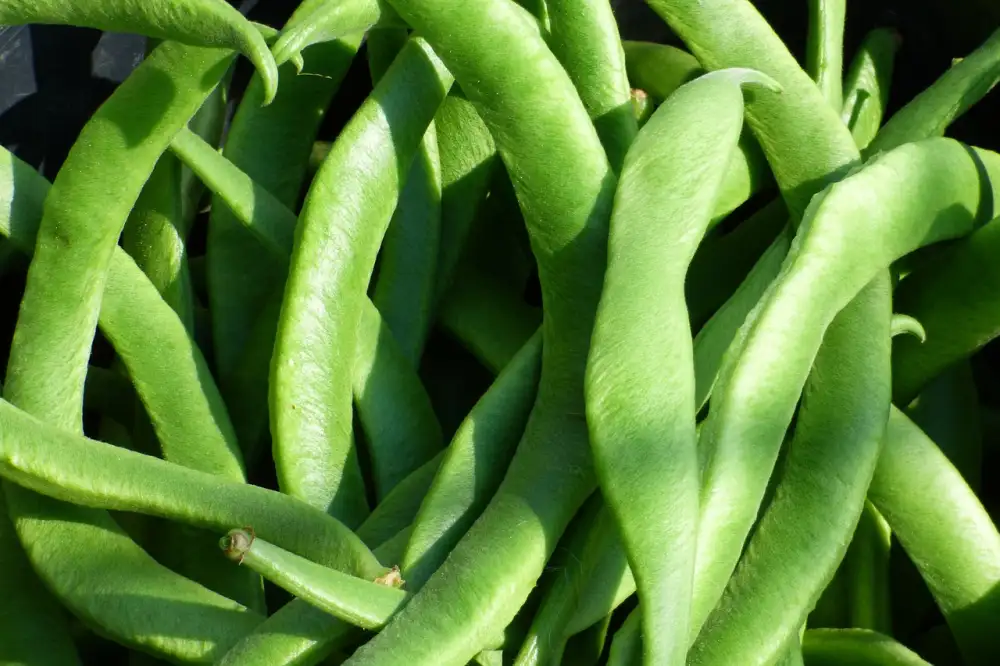Discover the Delights of Runner Beans: Elevate Your Home Cooking with this Nutritious Veggie

Runner beans, also known as pole beans or climbing beans, are a versatile and nutritious vegetable that can elevate your home cooking. These vibrant green pods are a staple in many cuisines around the world, prized for their tender texture and delicious flavor. Whether you're a seasoned chef or just starting out in the kitchen, runner beans are a fantastic addition to any meal. In this article, we will explore the health benefits of runner beans, how to grow them in your own garden, popular recipes using this veggie, and tips for cooking them to perfection. Get ready to discover the delights of runner beans and take your cooking skills to new heights!
Health benefits of runner beans
Runner beans are not only delicious, but they also offer numerous health benefits. Packed with essential nutrients, runner beans are a great source of dietary fiber, which aids in digestion and helps maintain a healthy weight. They are also rich in vitamins A and C, which boost the immune system and promote healthy skin. Additionally, runner beans contain iron and folate, important for red blood cell production and preventing anemia. Incorporating runner beans into your diet can contribute to overall well-being and support a healthy lifestyle.
Growing runner beans in your home garden
Growing runner beans in your home garden is a rewarding experience. These versatile vegetables thrive in warm climates and can be easily grown from seeds. Choose a sunny spot with well-drained soil and plant the seeds directly into the ground or in containers. Provide support for the plants to climb, such as trellises or poles. Water regularly and mulch around the base to retain moisture. With proper care and attention, you'll soon have a bountiful harvest of fresh runner beans to enjoy in your home cooking.
Harvesting and storing runner beans
Harvesting runner beans is an exciting and rewarding experience. Once the pods have reached their full size, usually around 6 to 8 inches long, they are ready to be picked. Gently snap or cut the pods from the plant, being careful not to damage the vines. It's important to harvest regularly to encourage continuous production. Store freshly picked runner beans in a cool place or refrigerate them for up to a week. To store for longer periods, blanch and freeze them. Remember, the fresher the beans, the better they taste!
Popular recipes using runner beans
These recipes showcase the versatility of runner beans and provide different options to incorporate them into your cooking repertoire.
Tips for cooking runner beans to perfection
Tips for Cooking Runner Beans to Perfection:
1. Blanching: Before cooking, blanch the runner beans in boiling water for a few minutes. This helps retain their vibrant color and crispness.
2. Steaming: Steaming is a great way to cook runner beans while preserving their nutrients. Steam them for about 5-7 minutes until they are tender but still have a slight crunch.
3. Sautéing: Heat some olive oil or butter in a pan and sauté the runner beans with garlic or onions for added flavor. Cook them on medium heat until they are tender but not mushy.
4. Stir-frying: Cut the runner beans into bite-sized pieces and stir-fry them with your favorite vegetables and seasonings. Cook them over high heat for a few minutes until they are crisp-tender.
5. Roasting: Toss the runner beans with olive oil, salt, and pepper, then spread them on a baking sheet. Roast them in the oven at 425°F (220°C) for about 15-20 minutes until they are slightly charred and crispy.
6. Grilling: Brush the runner beans with olive oil and grill them over medium-high heat for about 5-7 minutes per side until they develop grill marks and become tender.
Remember to experiment with different cooking methods to find your preferred texture and taste when cooking runner beans!
Runner beans as a sustainable food choice
Runner beans are not only delicious and nutritious, but they are also a sustainable food choice. They have a low carbon footprint compared to other protein sources such as meat and dairy. Runner beans require minimal water and fertilizer to grow, making them an environmentally friendly option. Additionally, they can be easily grown in your own garden, reducing the need for transportation and packaging. By incorporating runner beans into your cooking repertoire, you are making a positive impact on both your health and the planet.
Culinary Versatility
Runner beans are a versatile and nutritious vegetable that can elevate your home cooking to new heights. With their vibrant color, crisp texture, and delicate flavor, they are a delightful addition to any dish. Whether you choose to enjoy them in salads, stir-fries, soups, or as a side dish, runner beans bring a unique taste and nutritional value to your meals.
Nutritional Powerhouse
By incorporating runner beans into your cooking repertoire, you not only enhance the flavors of your dishes but also reap the numerous health benefits they offer. From providing essential vitamins and minerals to promoting digestion and boosting immunity, these beans are a powerhouse of nutrition.
Growing and Storing Runner Beans
Growing runner beans in your own garden is not only rewarding but also ensures that you have access to fresh and pesticide-free produce. With proper care and attention, you can enjoy a bountiful harvest of runner beans throughout the growing season.
Once harvested, storing runner beans properly will help maintain their freshness and flavor for longer periods. Whether blanching and freezing them or storing them in the refrigerator, following simple storage techniques will ensure that you can enjoy their goodness even after the growing season ends.
Cooking Tips and Recipes
To make the most of runner beans in your recipes, try popular dishes like runner bean salad with feta cheese or sautéed runner beans with garlic and lemon zest. These recipes showcase the versatility of this vegetable while adding a burst of flavor to your meals.
When cooking runner beans, it's important to remember some tips for achieving perfection. Blanching before cooking helps retain their vibrant color and crispness. Avoid overcooking them as this can lead to mushiness. Instead, aim for a tender yet slightly crunchy texture by steaming or stir-frying them briefly.
Sustainability and Conclusion
Incorporating runner beans into your diet is not only beneficial for your health but also contributes to sustainable food choices. These legumes require less water than other crops and enrich the soil with nitrogen, reducing the need for synthetic fertilizers. By choosing runner beans, you are making a positive impact on the environment.
In conclusion, runner beans are a nutritious and delicious addition to your home cooking repertoire. From their health benefits to their versatility in recipes, these beans offer endless possibilities for elevating your culinary creations. So why not embrace the delights of runner beans and discover a whole new world of flavors in your kitchen?
Published: 10. 12. 2023
Category: Home



